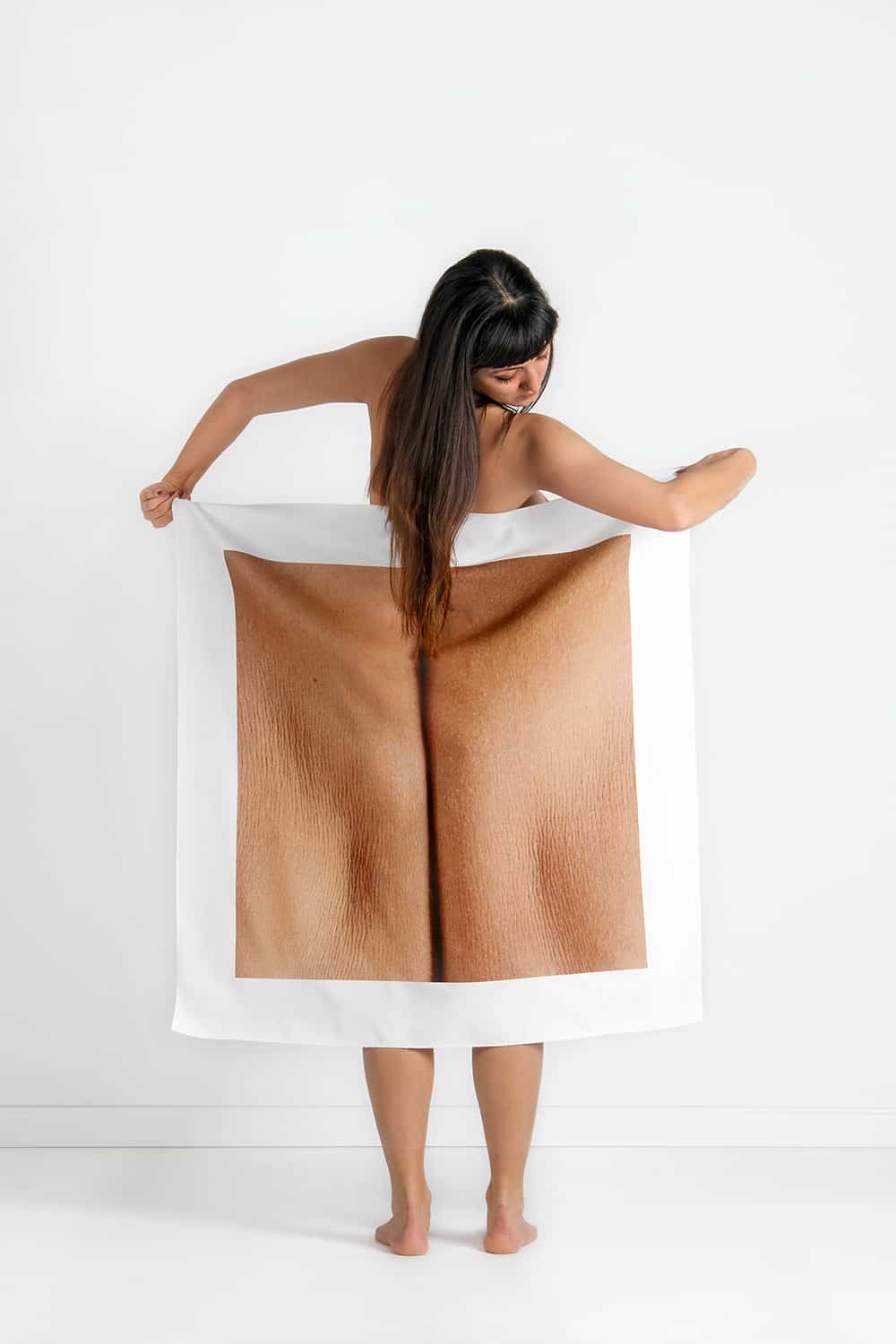

How do we see our own bodies? Is our view distorted? Is self-perception our worst enemy? These are the questions visual artist Meltem Isik asks in her compelling photographic series “Twice Into The Stream”. Isik, based in Istanbul, went through a process that is closely linked with performance and sculpture, but chose photography as her medium for this eye-opening series and says she wanted to “search for alternative ways of looking and thinking about things we see and experience”. “It is about self-perception, in relation to how we are perceived by others,” says Isik. GLAM4GOOD was moved by Isik’s powerful, important images and sat down with the artist to find out more about her moving work and message.

What is the mission or intent of this series?

“Twice Into The Stream” can be thought as an inquiry into the way we see and perceive the human body. It is about self perception in relation to how we are perceived by others.
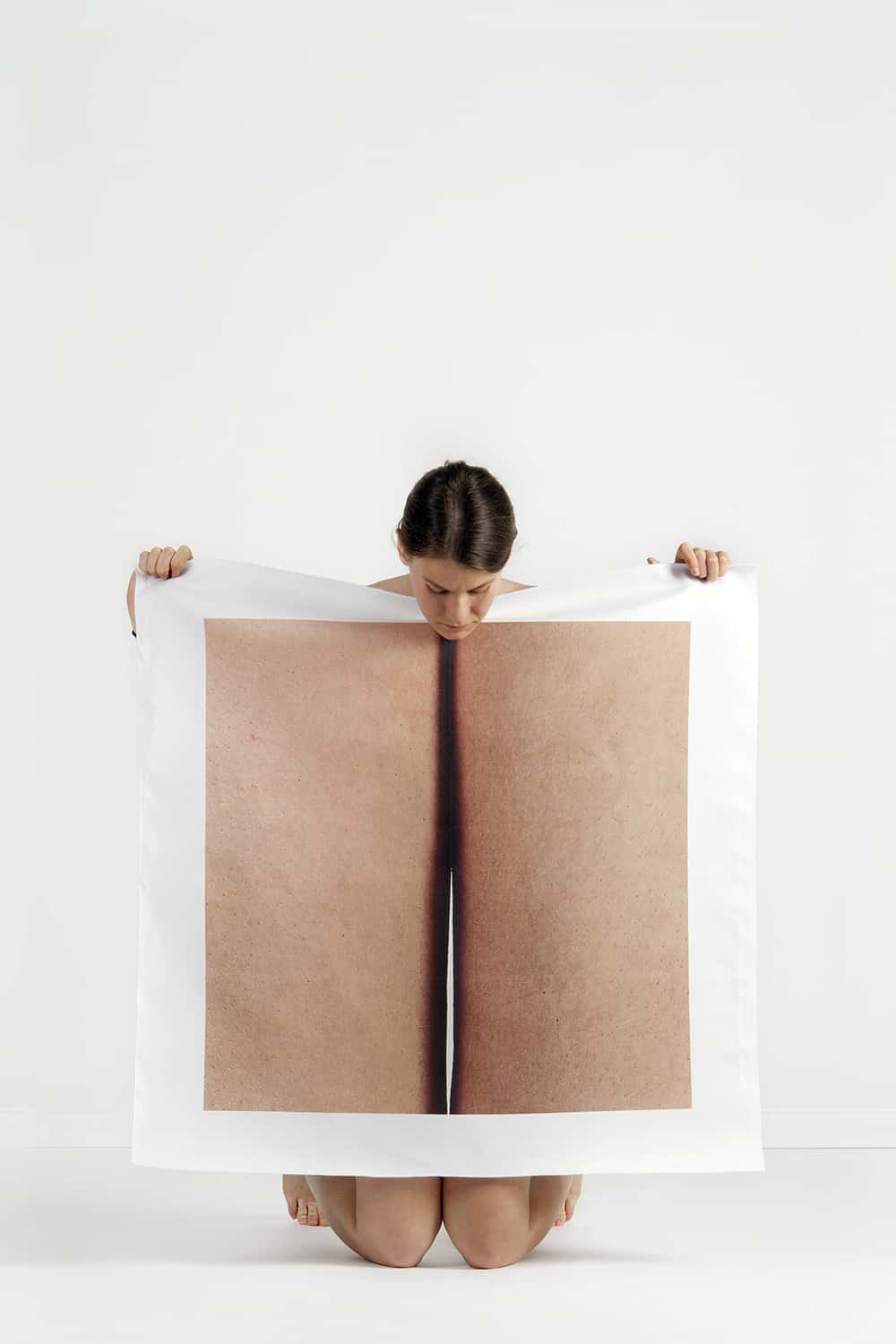

GLAM4GOOD finds your work inspiring did you set out to empower others when you started? Tell us about that evolution.

It was a mixture of chance, choice and collaboration! The series grew out of a spontaneous photograph I took to document my work in progress. At the time, I was experimenting with printing a photographic image on the surface of a sculpture. After many unsuccessful attempts, I finally got someone to print on a fabric that was going to be stretched over the sculpture, like a skin. I was excited to document that moment. My husband picked up the fabric with an enlarged image of his own belly printed on it and as he was looking down intently at the image on the fabric, I noticed something interesting about the way he was observing the oversized print. It was as if he was examining his own body. I couldn’t pinpoint what it was at the time, but what I saw had something to do with the complexity of our relationship to photography and how we relate photographs to reality. I took the photo, which later evolved into the “Twice Into The Stream” series.
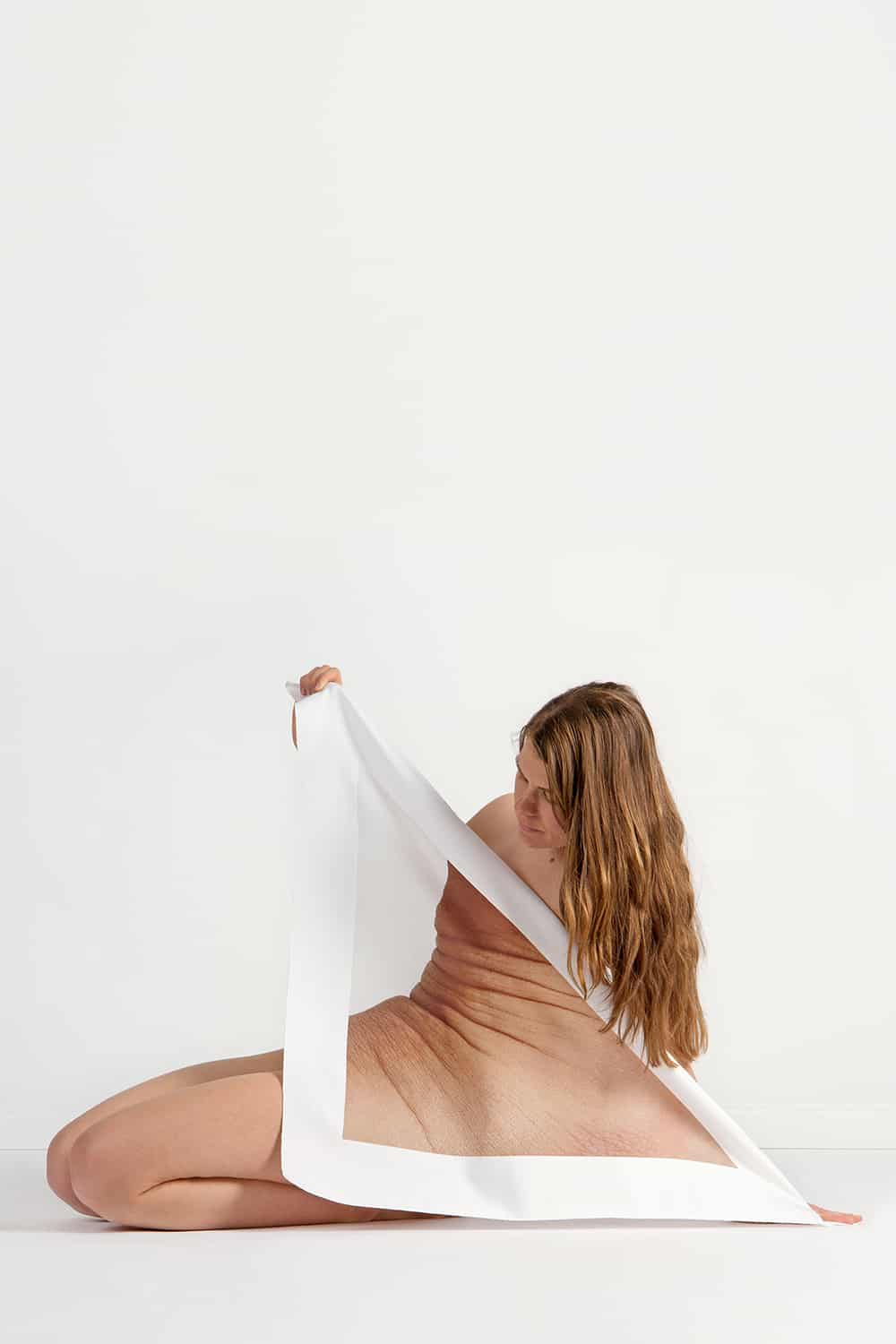

Why did you pick the subject of body distortion for this series?

I find the fact that we cannot see ourselves as a complete figure without the help of photographs or mirrors, very interesting. What we can see with our bare eyes is a headless body, a restricted view of what is below the neck, with the extended difficulty of seeing our back.
“We go through life with this limited view, which probably effects how we operate in this world physically and emotionally. I was curious to explore this idea visually. Self-perception is a metaphor for the limits of our personal points of view in general. I believe acknowledging our limits is an important step in negotiating our differences of perception and opinion.”


How do you think pop culture’s obsession with the human body damages women’s body perceptions? As a woman yourself, is this something that you have battled as well?

I don’t think anyone is immune to damage, women, men, girls, or boys. My way of dealing with it is looking around me in order to have a reference point for what is real. I take a walk around town and use public transportation regularly. I see all kinds of people, not just an edited version of reality. Isn’t that nice?
“If you spend too much time online, watching TV or reading beauty magazines, it’s not surprising that your reality shifts. However, I do not think it is fair to blame pop culture or media if you can not lift your head up and live life as it happens right here, right now.”
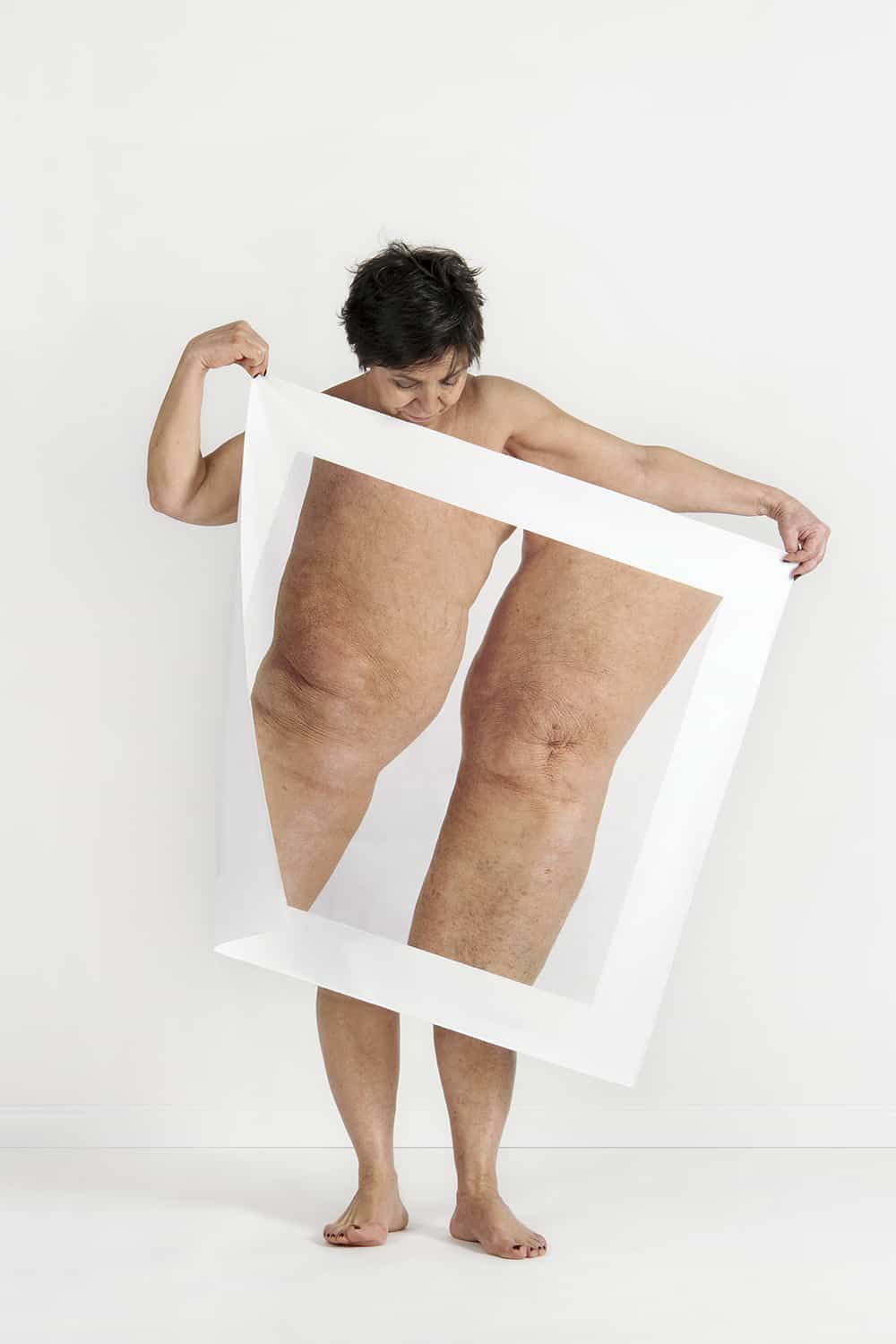

How did you pick the people you photographed?

I was trying to deliver a sense of intimacy, therefore it made sense to ask my family and very good friends to take part in the project instead of working with complete strangers. I believe it was possible to somehow transfer the intimacy of each relationship into the final images. It was an amazing collaboration.

Did the subjects in this series pick the body parts they felt they had a distorted view of?

The choice wasn’t about picking a part they felt they had a distorted view of. It was rather a choice based on what they felt comfortable with, what they allowed me to photograph. In some cases they had suggested specific parts they wanted me to try.
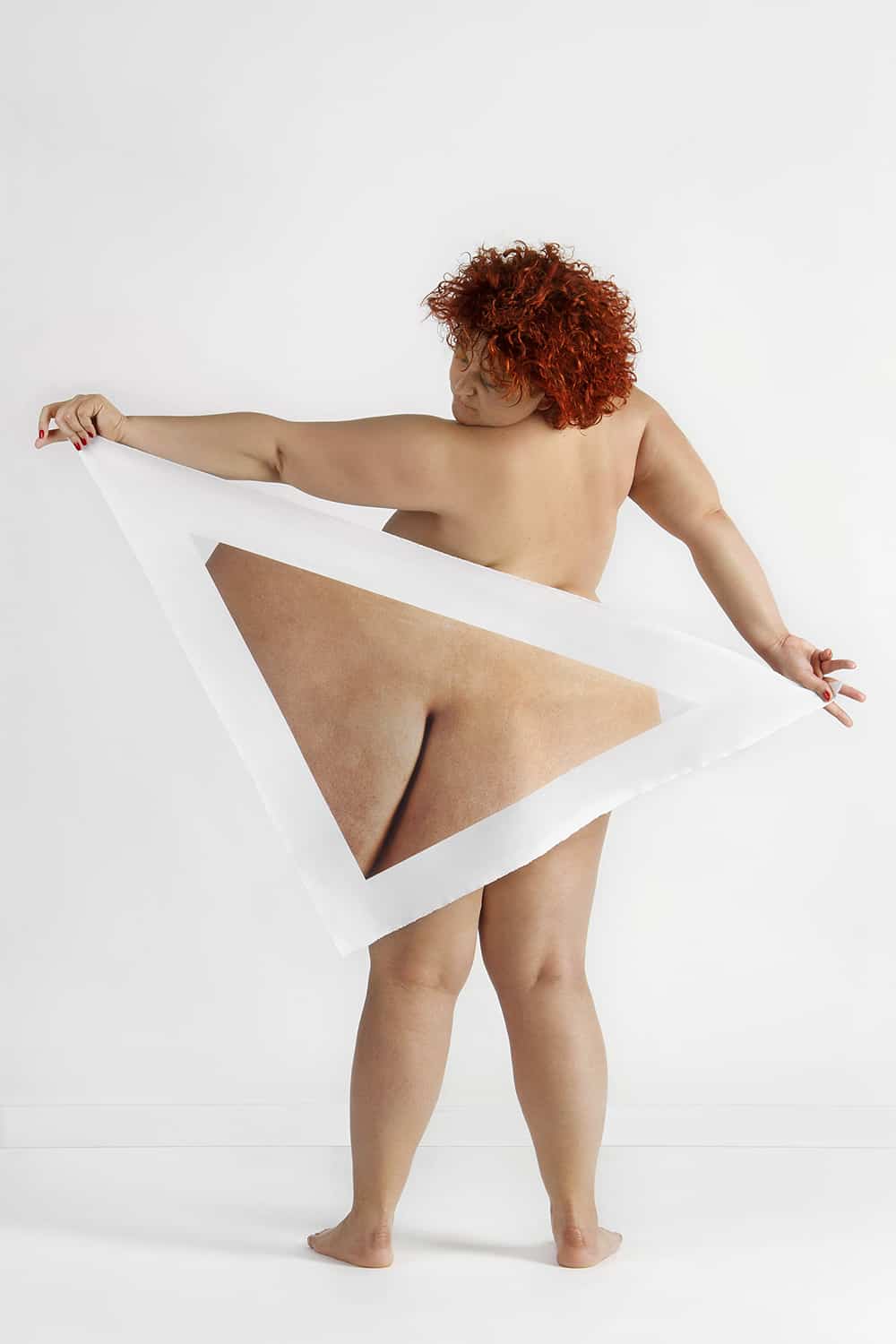

What was the most moving/emotional moment for you when creating this series or showing this series?

I have to say the shooting stage was very moving for me. The participation of each individual model offered different opportunities with their unique bodies, individual personalities, varying capabilities of movement, and traces of life and age on their skins. With the rules they bring to the table, about which parts of their body can and cannot be photographed, there was also a continuous negotiation between me and my models. The series grew and changed with the participation of each individual. During the initial photo shoot, I didn’t have a preconceived notion of what the final piece would look like, and neither did the models. They trusted me. It was like going through uncharted territory with people who are very close to me. Our familiarity with each other made it easier for my models to relax and be candid in front of the camera, even though they were naked. It also made my work behind the camera easier, in the sense that I really looked at and explored their bodies without feeling shy or strange.
“Observing their bodies, created a new possibility for me, to reflect on the way I see and relate to my own body, which I will never be able to see as a whole.”

How do you hope this series helps people?

I hope it makes people think.

 DONATE
DONATE

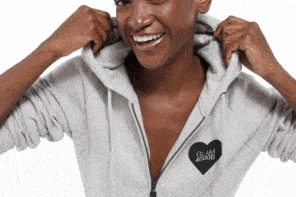

Yeah bookmaking this wasn’t a speculative conclusion outstanding post! .
Ce qui est extraordinaire, c’est qu’il boycotte ensuite l’entraînement l’après midi.